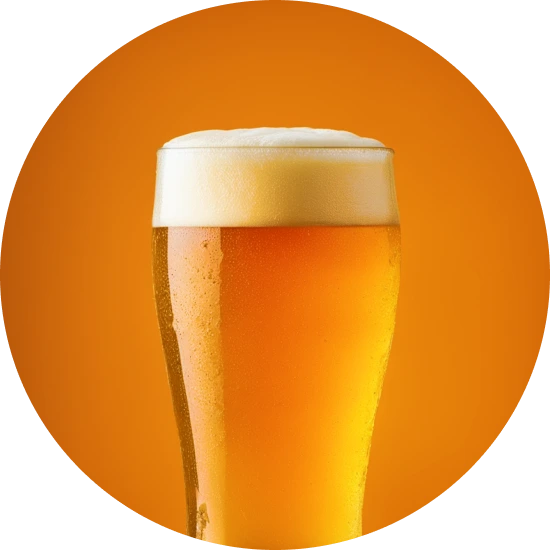Explore the Family Name So
How common is the last name So in the United States?
According to the data from the Decennial U.S. Census, the popularity of the surname "So" increased between 2000 and 2010. In 2000, it ranked 5166 in terms of most common surnames, but by 2010, it had climbed to 4749, reflecting an 8.07% increase in rank. The actual count of people with this surname also grew, going from 6227 individuals in 2000 to 7456 in 2010 — a notable increment of 19.74%. The proportion of this surname per 100,000 people similarly rose by 9.52%, moving from 2.31 to 2.53.
| 2000 | 2010 | Change | |
|---|---|---|---|
| Rank | #5,166 | #4,749 | 8.07% |
| Count | 6,227 | 7,456 | 19.74% |
| Proportion per 100k | 2.31 | 2.53 | 9.52% |
Race and Ethnicity of people with the last name So
The ethnicity distribution of the surname "So," based on the Decennial U.S. Census data, remained primarily concentrated within the Asian/Pacific Islander category from 2000 to 2010, albeit with a slight decrease of 0.12%. Those identifying as two or more races decreased by 28.52%. However, there were increases noted among those identifying as White (3.99% increase) and Hispanic (78.64% increase). Interestingly, there were no individuals with the surname "So" who identified as Black or American Indian and Alaskan Native in 2010, where both categories held minimal percentages in 2000.
| 2000 | 2010 | Change | |
|---|---|---|---|
| Asian/Pacific Islander | 92.71% | 92.6% | -0.12% |
| White | 2.76% | 2.87% | 3.99% |
| Two or More Races | 2.84% | 2.03% | -28.52% |
| Hispanic | 1.03% | 1.84% | 78.64% |
| Black | 0.51% | 0% | 0% |
| American Indian and Alaskan Native | 0.14% | 0% | 0% |
So ancestry composition
23andMe computes an ancestry breakdown for each customer. People may have ancestry from just one population or they may have ancestry from several populations. The most commonly-observed ancestry found in people with the surname So is Chinese, which comprises 50.8% of all ancestry found in people with the surname. The next two most common ancestries are Korean (17.7%) and Indonesian, Thai, Khmer & Myanma (7.9%). Additional ancestries include Filipino & Austronesian, Chinese Dai, Vietnamese, British & Irish, and French & German.
Ready to learn more about your ancestry? Get the most comprehensive ancestry breakdown on the market by taking our DNA test. Shop 23andMe
| ANCESTRY BREAKDOWN | COMPOSITION |
|---|---|
| Chinese | 50.8% |
| Korean | 17.7% |
| Indonesian, Thai, Khmer & Myanma | 7.9% |
| Other | 23.6% |

Possible origins of the surname So
Your DNA provides clues about where your recent ancestors may have lived. Having many distant relatives in the same location suggests that you may all share common ancestry there. Locations with many distant relatives can also be places where people have migrated recently, such as large cities. If a large number of individuals who share your surname have distant relatives in a specific area, it could indicate a connection between your surname and that location, stemming from either recent ancestral ties or migration.
Based on 23andMe data, people with last name So have recent ancestry locations all within China.
| RECENT ANCESTRY Location | Percentage |
|---|---|
| Fujian, China | 61.20% |
| Guangdong, China | 61.20% |
| Zhejiang, China | 60.10% |
| Shandong, China | 60.10% |
| Shanghai, China | 60.10% |
What So haplogroups can tell you
Haplogroups are genetic population groups that share a common ancestor on either your paternal or maternal line. These paternal and maternal haplogroups shed light on your genetic ancestry and help tell the story of your family.
The top paternal haplogroup of people with the surname So is O-F837, which is predominantly found among people with East Asian & Indigenous American ancestry. Haplogroup O-F837 is descended from haplogroup O-M1359. Other common haplogroups include O-F8 and O-CTS2498, which are predominantly found among people with East Asian & Indigenous American and East Asian & Indigenous American ancestry. Other surnames with similar common haplogroups are: Luong, Tong, Tran, Chan, Xie, Cheung, Thai, Ha, He, Fu.
The most common maternal haplogroups of people with So surname are: M, B4, D4. These most commonly trace back to individuals of European ancestry.
 Paternal Haplogroup Origins O-M1359
Paternal Haplogroup Origins O-M1359
Your paternal lineage may be linked to the Khasi-Khmuic groups of Southeast Asia
Haplogroup O2 is very common among several ethnic and linguistic groups in northeastern India, East Asia, and Southeast Asia. Haplogroup O2 is particularly common among Khasi-Khmuic groups of Southeast Asia. It is possible that the Khasi, one of the Khasi-Khmuic ethnic groups, represent a genetic link between South Asian populations and Southeast Asian populations that diverged from each other during the massive human migration from Africa. During this migration 50,000-70,000 years ago, modern humans left Africa and began moving eastward, along the southern coast of Asia. These migrating humans very quickly reached South and East Asia, using the Western Indian corridor to enter India. They later used northeastern India as a corridor to reach Southeast Asia and Oceania. The Khasi people, among whom haplogroup O2 is common, may descend directly from this ancient human migration that is responsible for the peopling of much of the world.
Your maternal lineage may be linked to the Han
Members of haplogroup D are found in both northern and southern Han Chinese populations at low to moderate frequencies. The Han people, who all share the same language and similar cultural practices, are the largest ethnic group in the world, with about 1.2 billion people. Historical evidence shows that Han people are descendants of the ancient Huaxia tribes that come from northern China, and Han language and culture only expanded into southern China in the last 2,000 years. The spread of Han people and culture from northern to southern China was likely driven by warfare and famine in the north.

What do people with the surname So have in common?
Spoiler alert: it's complicated. People with the same last name are usually no more genetically similar than a randomly sampled group of people from the same population. That said, people with the same surname are more likely to have similar ancestries than randomly sampled individuals. The reason is the tendency of people with similar cultural or geographical backgrounds to preferentially mate with one another. That's why people who share a surname may be more likely to share traits and tendencies in common than people within the general population. Check out the percentages below to see the prevalences of tastes, habits, and traits of people with your surname compared with prevalences among 23andMe users.
Preferences
Traits
Habits
Wellness
Are health conditions linked to the last name So?
The short answer is that, if there is an association between surname and health, it's usually more about your ancestry than your name. Individuals with a given surname are no more genetically similar than the general population but often have similar ancestries. The populations of people associated with those shared ancestries often have sets of genetic variations, also known as alleles, in common. Some of those alleles are associated with a greater likelihood of developing certain diseases.
Disease variant frequency by ancestry
Disease allele frequencies in populations associated with the surname So are shown below. Important Note: not everyone with a disease allele will develop these health condition











